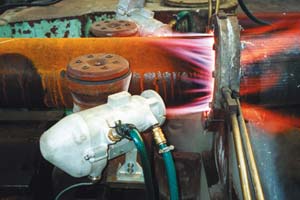Improve Quality
By continuously monitoring steel tubes with infrared products like Endurance Series Pyrometers and the ThermoView TV40 Fixed Thermal Imager, can ensure products reach optimal preheat temperatures and cool at the correct rate, eliminating the potential for cracking or distortion later down the line and reducing rework rates.
Additionally, our temperature monitoring solutions typically feed data directly into a PLC system in real-time, so your team can quickly make adjustments to power, gas or temperature as changes occur to help maintain quality.
Reduce Downtime
Fluke Process Instruments has also developed a through-process thermal profiling system to gain more insights into your furnace so you can optimize your process and reduce downtime. With the Datapaq Furnace Tracker Thermal Profiling System, your team can track temperatures and analyze trends, allowing you to schedule maintenance and downtime.
This Datapaq solution also allows operators to minimize new product set up time with our easy-to-use Insight™ Software, which can save your furnace recipes for a variety of products as well as recommend potential settings based on furnace performance.
The actionable analytics provided by the Insight™ Software also enables operators to make furnace adjustments in real-time that can help save on energy costs while ensuring products maintain quality, which further helps to support the demands of your production process.



